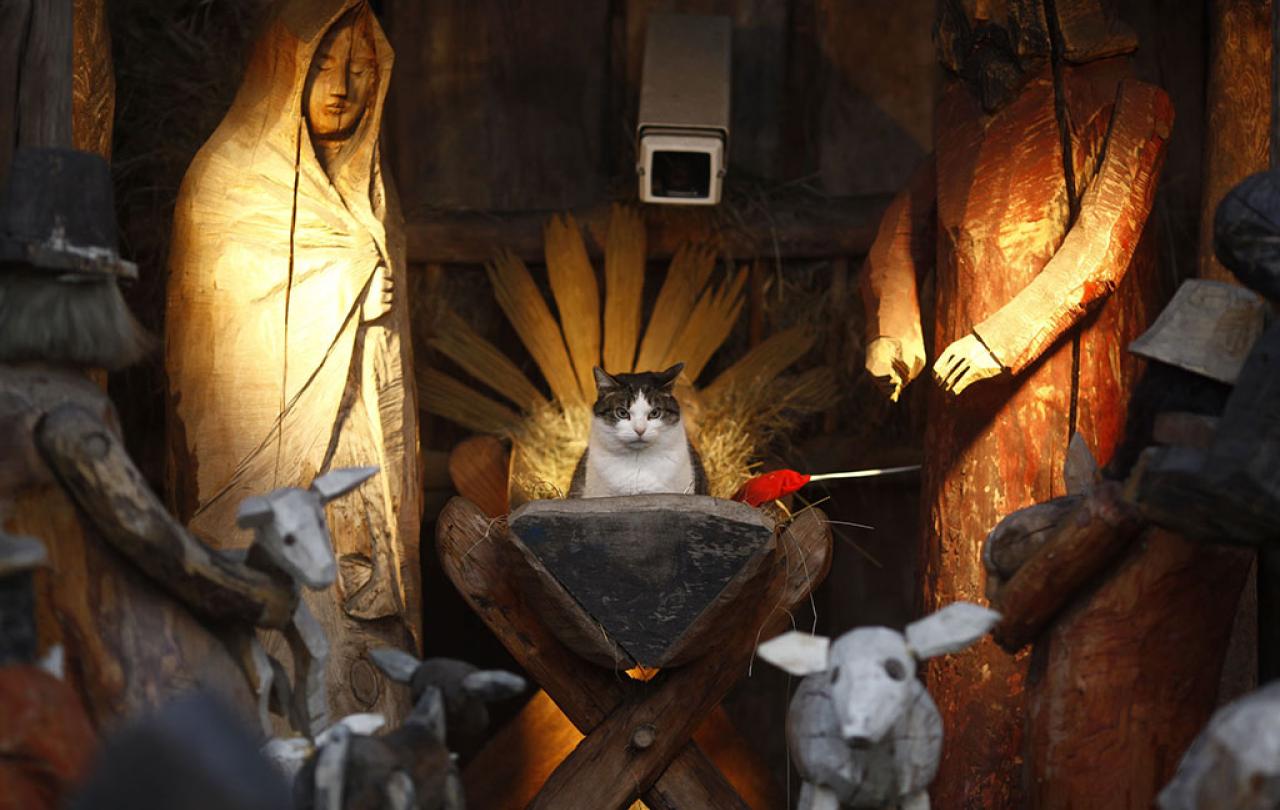
So, during the years of my acting career, I always avoided Panto (oh yes I did). Not because I don’t like Panto, I love a good Panto. But because I didn’t want to work over Christmas. How God will have chortled at that great irony, knowing as he did that as of 2005 (the year I got ordained), I would be working every Christmas for the rest of time.
Christmas is different now. Not only am I ordained, I’m married to a vicar. I’m completely immersed in professional Christmas. And Christmas is a bit different when you’ve turned pro. I won’t go so far as to say that being ordained has ruined Christmas, but it’s certainly changed it. But so has (supposedly) being a grown up.
My “Proper Christmas” will always be the Christmas that I grew up with (is that just me?). I had traditional preparing-for-Christmas jobs that I did every year on Christmas Eve eve: polishing the special cutlery we only used once a year, making the brandy butter (which is a bit odd now I think about it, being that heavily involved with brandy from the age of six) and decorating The Tree. And having the annual argument with my sister about whose turn it was to take the present to our neighbours across the road. And eating a lot of satsumas. And chocolate. And seeing my cousins and playing Trivial Pursuit. All of which looks very rosy seen through the eyes of a child. Christmas is different when you’re ordained and you have to work, but it’s also very different when you’re the grown up.
I used to think my mother made a ridiculous amount of fuss about Christmas. I am now that same mother. I think it’s Michael McIntyre who does a whole routine about women starting to write their Christmas To Do lists in October and endlessly shrieking, “there’s so much to do!” That’s me folks. Christmas as a grown up – or at least for this grown up – feels like there’s so much to do!
I always imagine (unhelpfully fantasize) that Other People’s families are living the Christmas dream – the relaxed, cosy evenings drinking hot chocolate or eggnog in front of a roaring fire; laughing and playing wholesome games happily and peacefully with their angelic children, wearing matching Christmas jumpers. In the cold light of day, I realise that, actually, most people find Christmas stressful for a million different reasons. It’s not all twinkly and bright.
For many people, Christmas means seeing all the family that they avoid during the rest of the year. It means spending money they can ill-afford on presents that may not be wanted. Christmas means missing the people who aren’t with us anymore. It means endless advertising campaigns suggesting that you aren’t living the perfect life – but that if you buy a new sofa, you’ll salvage the ruins of your life just in time for a perfect, twinkly Christmas.
And so the life of the mythical twinkly, “magical” Christmas lives on. With little or no reference to its origin story.
I was the chaplain at a Church of England secondary comprehensive school for seven years. In my first term, putting together the carol service, I asked a class chapel rep if she would do one of the Bible readings. “Oh, is Christmas in the Bible?” Huh. Another conversation I had went along the lines of, “Miss, I don’t believe in Jesus and all that religious stuff. But I believe in the spirit of Christmas.” Huh.
There’s a song in the staged musical version of the film Nativity, which is to all intents and purposes a Christmas prayer. But instead of the prayer being directed at God, it is directed at Father Christmas;
Dear Father Christmas, make our wish come true
Dear Father Christmas send your spirit through
There are Children in the world who need you way more than we do
But Father Christmas, we still believe in you
Dear Father Christmas make our wish come true
Which brings me to a difficult moment in my Christmassy life. I have a parenting policy that demands that I tell my children the truth. Whatever the question, if I know the answer, I will give it to them honestly. So, when my children were around the ages of four and six, in the middle of Sainsbury’s, with both children piled into the trolley, in mid-November, surrounded by early Christmas-abilia, one of my children asked me, “Mummy, does Father Christmas really exist?”. (SPOILER ALERT!!). I had to give an honest answer. If the question had been less straight, if there had been any wriggle room at all, I would have fudged it. But a straight question deserved a straight answer. Which, wide-eyed, they went and shared with their friends. A crowd of angry parents from their Primary school came to church to complain that the Vicar’s children had ruined Christmas.
But my point was that if I were to tell my children that I believe Father Christmas exists and that he grants Christmas wishes, were they ever to find out that I had lied (ahem), how would they trust me when I say that I believe Jesus does exist and that he does answer prayers? The challenge has lived with me ever since: how to keep Christmas rooted in Christ without ruining the Christmas magic.
Well, my saving grace is that I’m still a sucker for a bit of Christmas schmaltz. The theologically sensitive part of me absolutely abhors Away in a Manger (“no crying he makes”? Really? He was a new-born baby, of course he cried!!) and Little Donkey (in the Bible accounts there is absolutely no mention of donkeys at all. Not a single one – not on the road, not in the stable. No cows, no donkeys.) But light some candles, get the children singing and I have tears pouring down my face with the best of them, loving every moment.
But that still doesn’t mean that the essence of Christmas is the twinkly magic. Because, of course, the first Christmas was neither twinkly nor magic. Nor did it involve a perfectly curated tablescape (which I also love at Christmas). It didn’t involve any the stereotypical Christmassy things that we all get stressed about and love in equal measure. The first Christmas was messy and difficult. But it was also the most real, most genuinely joyous event in human history. Apart from Easter. Don’t get me started on chocolate bunnies….





